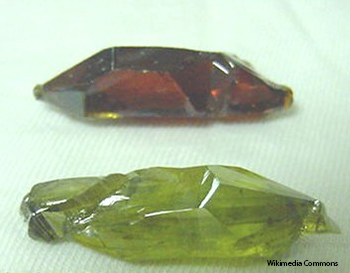
Synthetic zincite crystals
Zinc oxide—a mineral widely used in ceramics, paints and sunscreen products—has been investigated as a wide-bandgap semiconductor for blue and ultraviolet lasers and LEDs. Scientists based in North Carolina (U.S.A.) have figured out how to grow layers of zinc oxide that will exhibit stable, significant p-type behavior at room temperature (Appl. Phys. Lett. 102, 152114).
Previously, it has been difficult to grow zinc oxide films that will have large enough concentrations of holes for photonic applications. However, researchers at North Carolina State University in Raleigh discovered that nitrogen doping and subsequent annealing of the semiconductor created the desired concentrations of acceptors, roughly 1018 per square centimeter.
The team, led by physicist Judith Reynolds and materials scientist C. Lew Reynolds Jr., grew the zinc oxide, 400 to 800 nm thick, on sapphire substrates in a nitrogen-rich atmosphere, via a process called organometallic vapor-phase epitaxy. During the growth process, the substrates alternated between high and low partial pressures of zinc to form oxygen vacancies paired with nitrogen atoms at zinc sites.
Two subsequent annealing sequences, first at a lower temperature than the epitaxial growth process and the second at a higher temperature, converted the pairs to “shallow acceptors” consisting of a zinc vacancy, a nitrogen atom and a hydrogen ion (or proton). The group used Raman spectroscopy and low-temperature photoluminescence to verify the material’s structure and semiconductor properties.
Researchers from Duke University (Durham, N.C.) and the U.S. Army’s research center in Alabama also participated in the experiments.
